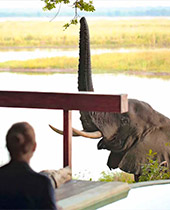The name Zambezi might sound new to you, but I guarantee that even if you haven’t already heard it or been there, you’ve most certainly seen images of the river bearing this name. In fact, this is the river that creates the legendary Victoria Falls as it tumbles broadly over an escarpment into a deep gorge.
The Zambezi is also significant in other ways. It’s the fourth-longest river of Africa, the source of the country name Zambia – where the river finds its own source – and fittingly, also forms a major part of the country’s southern border.
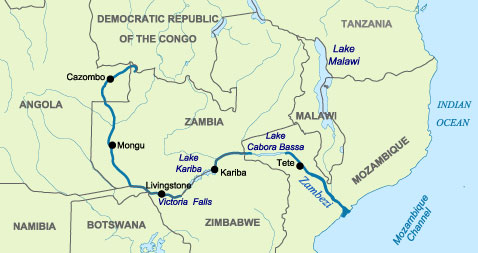
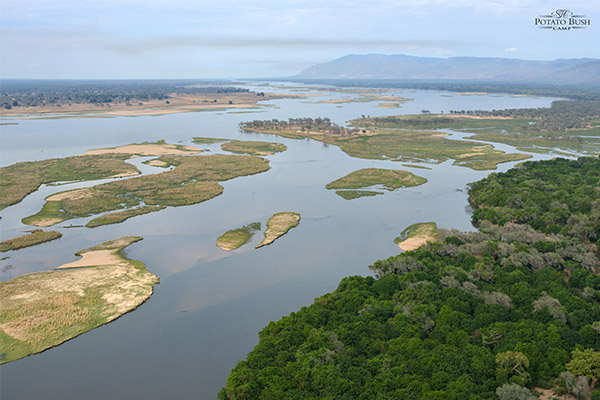
Here, wildlife roams freely as it does in big reserves elsewhere in Zambia, but the connection of the wildlife to water is front-and-centre here and this becomes a defining (and memorable) feature of your visit. How so?
The situation of the lodges
First, the six beautiful, unfenced (and small) lodges along this stretch of the Zambezi are situated along the bank, affording views of animals going to-and-fro. A few more lodges are just upriver. Elephants can be seen at close quarters as they peacefully browse or amble through.
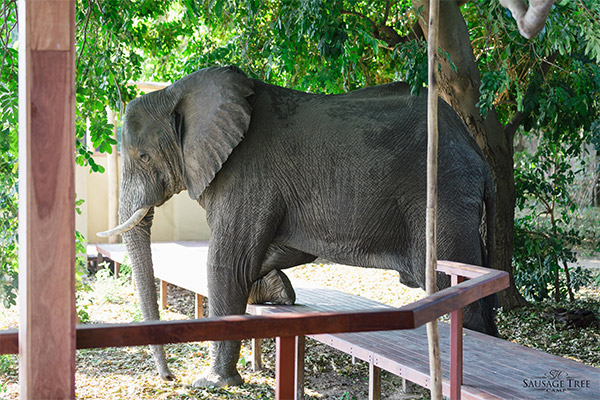
Adding to the intimacy is the fact that it’s not possible to see another lodge from one’s own. This further favours the unimpeded movements of the wildlife and provides a sense of a wilderness immersion experience (and the wildlife is often getting immersed in the river!).
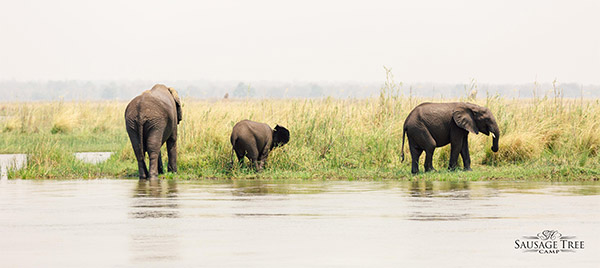
I particularly like birds and African bird life is nothing short of amazing and is present for those who wish to look and enjoy!
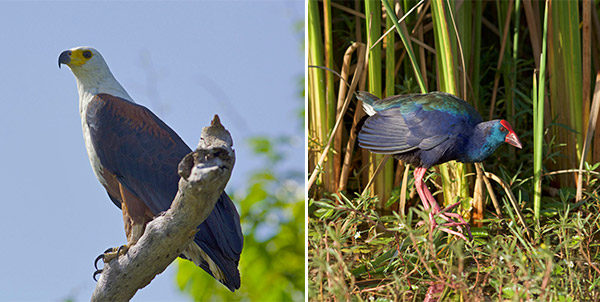
African Fish-Eagle, African Swamphen
© Justin Peter
Different ways of exploring
Each lodge has open safari vehicles that allows for premier wildlife exploration in very small groups. It’s possible to view a variety of wildlife, including Lions, Cape Buffalo and Leopards (which are fond of the well-treed habitat).
Each lodge has open safari vehicles that allows for premier wildlife exploration in very small groups. It’s possible to view a variety of wildlife, including Lions, Cape Buffalo and Leopards (which are fond of the well-treed habitat).
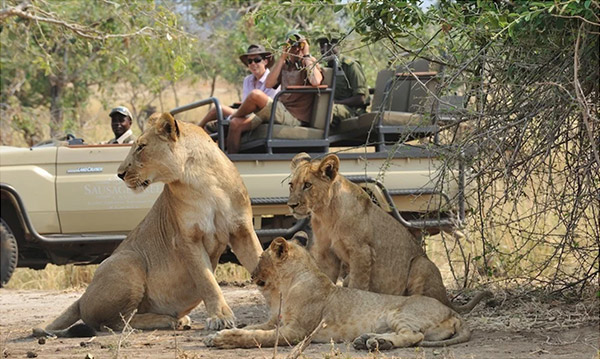
Zambia is notable for its walking excursions and you can also enjoy walking safaris of various lengths – even just short ones – in the company of expert lodge guides who make this a safe and educational experience.
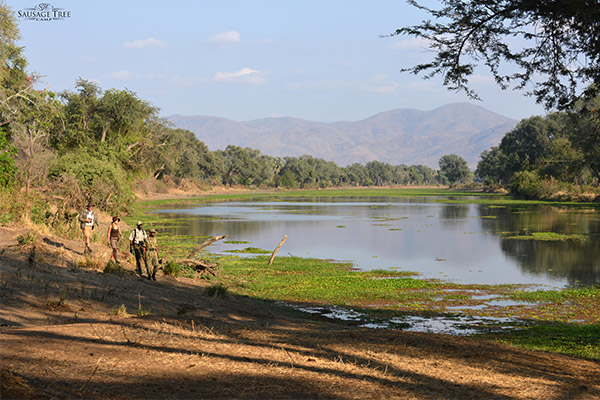
Of course, the presence of the gently flower Zambezi itself means we can readily explore the area by small motorboat or canoe, which provides an intimate experience of the interface of land and water as a variety of large mammals and many birds use the river as a travel corridor in addition to a water source.
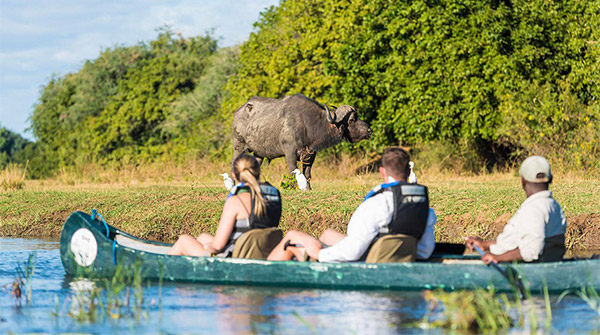
All-round wilderness feel
While it’s possible to access Lower Zambezi National Park overland, it’s not easy. The quickest means to access the park is by direct flight from the capital Lusaka but few other visitors will ever make the trip. The roads in the park remain unpaved, meaning that any exploration by motor vehicle in the park is low-key. And did I mention the night skies? Being in this wilderness zone means that you can enjoy the southern night skies in all their glory!
While it’s possible to access Lower Zambezi National Park overland, it’s not easy. The quickest means to access the park is by direct flight from the capital Lusaka but few other visitors will ever make the trip. The roads in the park remain unpaved, meaning that any exploration by motor vehicle in the park is low-key. And did I mention the night skies? Being in this wilderness zone means that you can enjoy the southern night skies in all their glory!
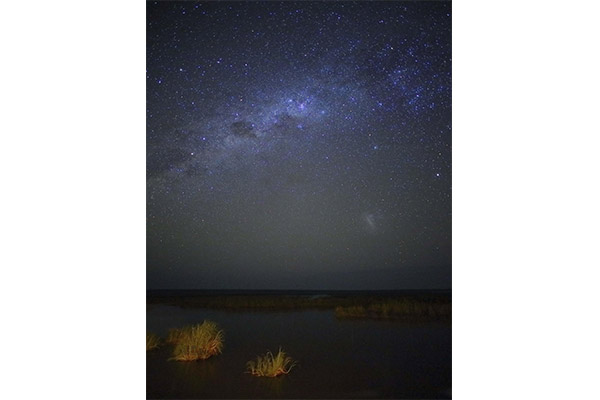
Our favourite lodge here is Royal Zambezi Lodge. These small riverside lodges have the promised great views of the river, amazing service and a premiere experience of African wildnerness!
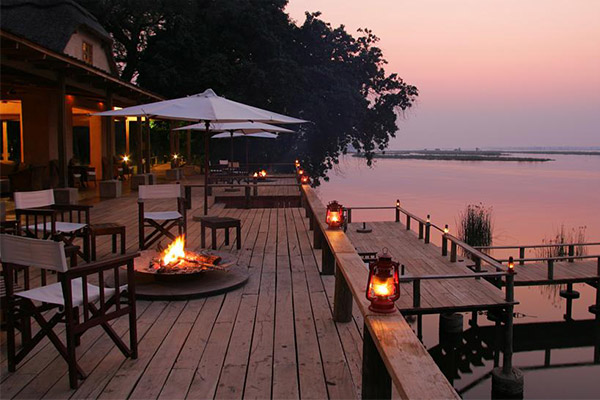
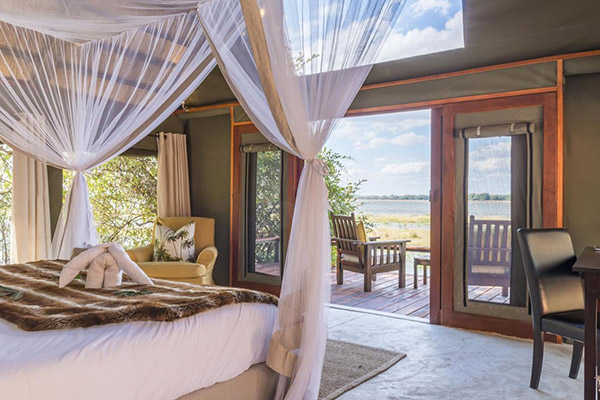
When should you consider visiting Lower Zambezi National Park?
The best time to visit is from June through mid-November during the dry season while water levels are lower and roads passable. The later months of this period are also a great time to see the colonial nesting of Southern Carmine Bee-eaters in South Luangwa National Park to the northeast.
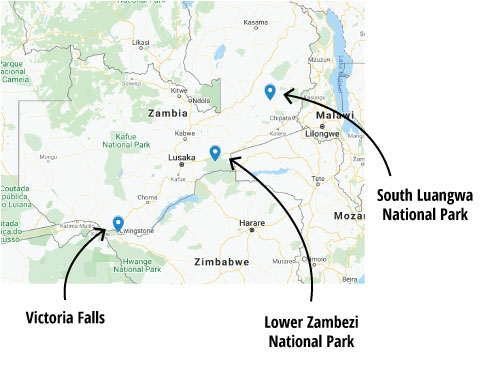 Zambia is an off-the-beaten-track African safari location. You'll particularly appreciate it if you’ve previously visited Africa on safari and would like an even more immersive experience. If the thought of Zambia interests you, please e-mail me to further discuss or click to the tour page below!
Zambia is an off-the-beaten-track African safari location. You'll particularly appreciate it if you’ve previously visited Africa on safari and would like an even more immersive experience. If the thought of Zambia interests you, please e-mail me to further discuss or click to the tour page below!
The best time to visit is from June through mid-November during the dry season while water levels are lower and roads passable. The later months of this period are also a great time to see the colonial nesting of Southern Carmine Bee-eaters in South Luangwa National Park to the northeast.



